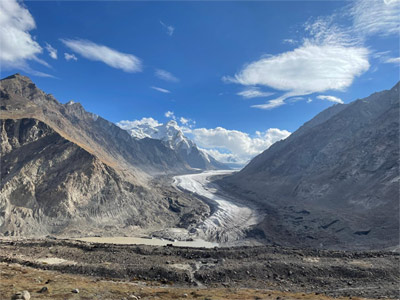
General Food Tips for Zanskar
When visiting Zanskar, food can be a unique part of your adventure. Given the region’s remote location, it’s important to know what to expect and how to prepare for meals while traveling.
Here are some general food tips for Zanskar:
Tibetan and Ladakhi Cuisine
Staples: The food in Zanskar is heavily influenced by Tibetan and Ladakhi cuisines. Expect a lot of vegetarian dishes, with rice, lentils, vegetables, and barley being key ingredients. Meat (usually yak or goat) is available in some places, but it’s not the primary component of meals.
Popular Dishes:
Momos: Tibetan dumplings filled with vegetables or meat.
Thukpa: A warming noodle soup made with vegetables or meat.
Tsampa: A Tibetan dish made from roasted barley flour, usually mixed with tea or water to form a dough-like consistency.
Dal-Roti: Lentils and flatbread, a common vegetarian meal.
Tibetan Bread: A type of flatbread, often served with tea.
Chang: A traditional barley beer made from fermented barley. It’s often served warm and is a great drink to have in the cold mountain air.
Limited Variety in Remote Areas
Basic Meals: In more remote villages and during treks, food will be simple, and the variety may be limited. Guesthouses and homestays usually serve local dishes like dal, rice, and vegetable curries. Don’t expect a wide selection of international or gourmet food in these areas.Vegetarian Focus: Due to limited meat availability and cultural preference, most meals will be vegetarian. If you do eat meat, it will likely be goat or yak.
Limited Fresh Produce: Fresh vegetables and fruits may be sparse, especially in winter months, so dried fruits, canned food, and root vegetables are common ingredients.
Chai and Butter Tea
Butter Tea (Po Cha): A staple in Tibetan culture, butter tea is made from tea leaves, yak butter, salt, and sometimes milk. It’s an acquired taste, but it provides essential calories and warmth in the cold climate.
Masala Chai: Traditional Indian spiced tea is widely available and is a popular beverage to warm up during chilly evenings.
Pack Snacks for Trekking
Energy-Boosting Snacks: If you're going on a trek, pack some snacks for the journey. Nuts, dried fruits, granola bars, and biscuits can be life-savers, especially when you're in more remote areas with limited food options.Instant Noodles: Many trekkers carry instant noodles as a quick and easy meal option while on the move.
Food Availability
Guesthouses and Homestays: In areas like Padum, Zangla, and Karsha, guesthouses often serve simple but filling meals, but you should inform your host in advance about dietary preferences or any food allergies.Remote Villages: In more isolated villages, food may not always be available on demand, so it’s advisable to carry your own provisions for snacks or emergency meals.
Limited Choices in Winter: In winter, some roads and villages may be cut off due to snow, and food supplies can be even more limited. It's good to stock up on essentials before heading into remote areas.
Hydration is Key
Water: Drink only bottled or boiled water to avoid waterborne diseases. Avoid drinking water from rivers or streams, as it may not be safe for consumption.Tea: Since tea is a staple beverage in the region, it can be a great way to stay hydrated and warm in the cold. Don’t hesitate to drink as much as you like, but make sure it’s made from safe water.
Cultural Sensitivity
Respect Local Eating Habits: Meals in Zanskar are often simple but served with respect. It’s customary to offer Tibetan butter tea to guests, and it's polite to drink it, even if you're not used to the taste.Eating with Locals: If invited to a local home or monastery guesthouse, you may be served traditional food. If you're unsure about something, feel free to ask your hosts what it is, as it's all part of the cultural experience.


